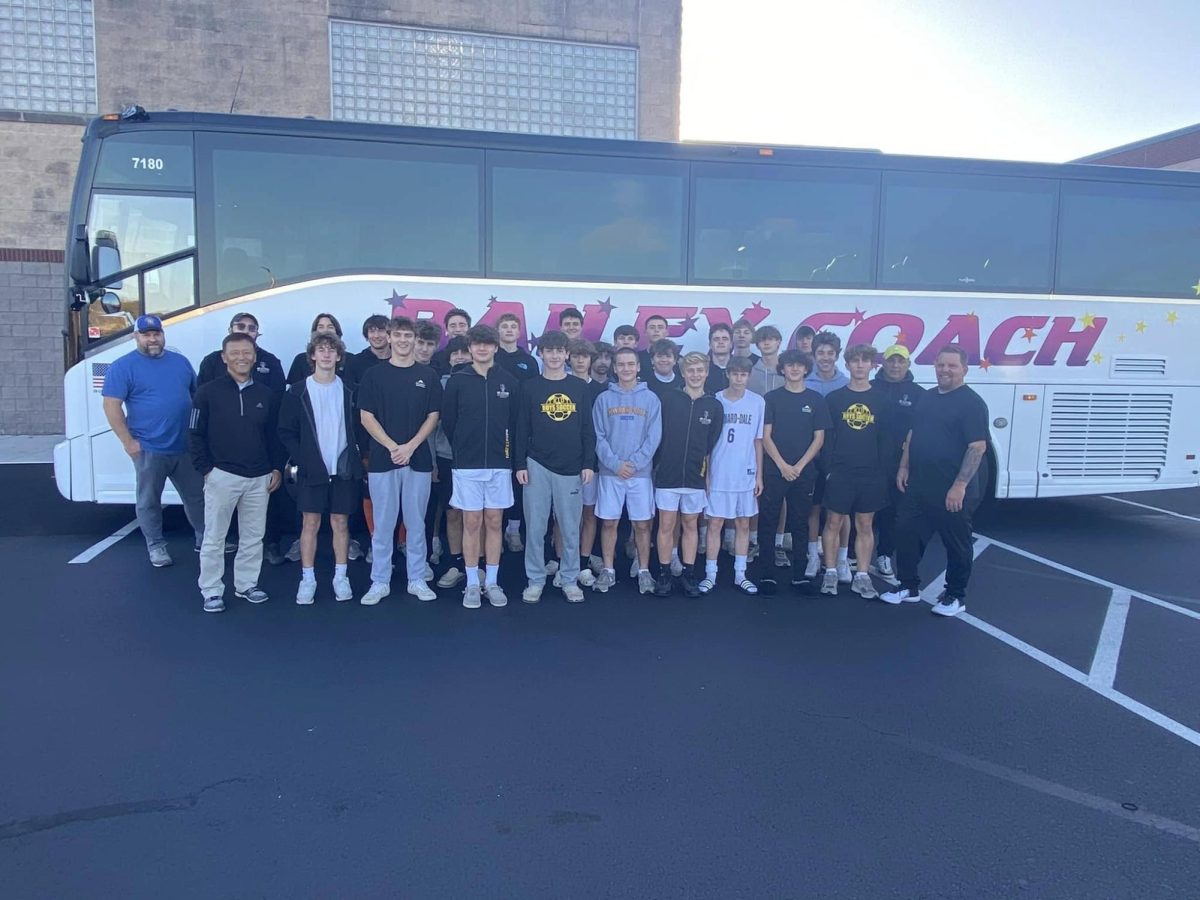The stadium shakes from the 110,823 people yelling, stomping and jumping around as the visiting team takes the field for the first time in Beaver Stadium at Penn State University. The crowd is electric, intimidating the visiting Michigan Wolverines as they have to take the first drive of the game.
The music blasts through the stadium as Michigan gets ready to take the snap. But wait – the quarterback can’t get it off. The crowd – being so loud and electric – makes it so the center can’t hear the QB, forcing Michigan to take a timeout on the first play of the game. The crowd gets even louder, to the point where you can’t even hear the person next to you, and you realize this is what college football is all about – that’s exactly how fans at the Penn State white-out game in 2019 felt.

College football has come a long way since 1869 when the first college football game was played. Now college football is better than the National Football League (NFL) in all aspects, from the atmosphere to the fans to the players to the gameplay. College football is the best place for athletes to play and fans to watch.
College football is completely different from the NFL; there are differences in the fans and stadiums, what the players are allowed to do, and the gameplay. For example, the much larger gap in athleticism from player to player allows more explosive plays in college football compared to the NFL. This makes the game more fun to watch. Throughout a college player’s career, we see him get tougher and work harder to shine in the game.
In college football, the fans have a role in controlling the game – especially for teams with bigger stadiums. The fans are something else on gameday; they get louder and can disrupt the away team more than NFL fans can. The fans tend to be more passionate, as the majority of people attending the game are students at the college. The passion for their team mixed with school spirit makes the fans cheer even more. Sometimes these crazy crowds can even influence how the away teams play; the fans get into the adversary’s head and cause the team to make egregious mistakes.
It helps that the college stadiums are sometimes even larger than the NFL’s. In fact, there are 14 college stadiums bigger than the largest NFL stadium – crazy right? The three biggest being the University of Michigan’s stadium (seating 107,601), Penn State University’s (seating 106,572), and Ohio State’s (seating 102,780). The average capacity for a college football stadium is 80,000, compared to the average for the NFL at 70,000.
Revenue is also a consideration when comparing stadiums. With many college stadiums being bigger, it lets more stores and shops be in the stadium, which means higher income for the school. Of course, this benefits the fanbase, as a larger stadium equals a larger crowd, making the games louder, more fun, and electric.
The gap in athleticism and playmaking by college players is way different than the NFL players mainly because they are still young and learning. This is a good thing, however, as you get to see more explosive plays from either individual players or the team as a whole.
College football games are highly competitive, especially during major rivalries or when facing top-ranked teams. The player performance changes from week to week, making the games tough to judge who will win. Upsets are more common in college, adding excitement and unpredictability. Since college players are still young and developing, it’s thrilling to watch their growth, see them become superstars, and eventually get drafted into the NFL.
In 2021, college football introduced NIL (Name, Image, and Likeness) deals, which allows players to sign deals with companies to endorse products and profit off of their personal brand. They can do TV commercials or post brand advertisements on their social media, while companies do the same for them. This allows players to be making money to play college football. This is good because if a player has a career-ending injury before the draft, he could still earn an income through NIL deals.
Another aspect of college football is the transfer portal, which is good for the players who aren’t happy at their current school. With so many college football programs, players are almost guaranteed to find a new team. In the NFL, players have to request a trade and could end up as free agents if no one signs them. College players also have more freedom with what they can wear during games, unlike the NFL, which has stricter regulations. Overall, players have more chances to succeed and make big plays in college football.
College football is exciting to watch and play, with bigger crowds and stadiums that create an electric and intense atmosphere. The difference in player athleticism also leads to more explosive plays, especially in big games between highly ranked teams. College football is better than the NFL and the best place to experience the game.







Emma • Mar 14, 2025 at 10:36 am
They are really good at foot ball and win a good amount of games